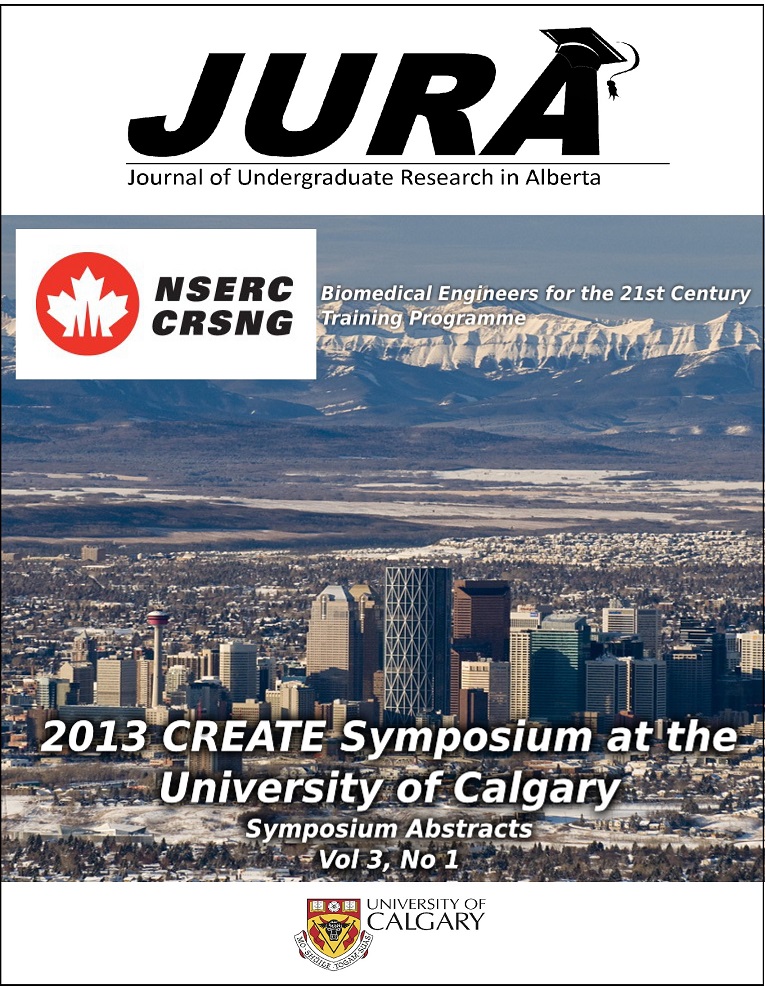Modeling the wall thickness of abdominal aortic aneurysms in patients
Abstract
INTRODUCTION
Aortic Abdominal Aneurysm (AAA) is defined as a focal dilation of the abdominal aorta greater than 3.0 cm. After an undetermined time after the onset of the pathology the wall weakens, eventually yielding rupture, which results in death in 90% of the cases.[1] AAAs are seldom detected at the early stage given absence of symptoms and the slow growth rate; however it has been shown that the stress on the wall is a better predictor of aneurysm rupture than simply measuring the diameter.[2] Computing physiological realistic wall stress requires: (i) an accurate 3D reconstruction of the AAA geometry, (ii) an appropriate constitutive law for the aneurysmal tissue and (iii) realistic loading and boundary conditions.
METHODS
Geometric reconstruction: To develop an anatomically realistic model of AAA a stack of CT images were imported into AAAVasc a MATLAB script [3] and segmented with an estimation of local distribution of AAA wall thickness. After obtaining the segmentation the mask was imported in ScanIP (Simpleware Ltd., Exeter, UK) and processed to obtain a preliminary grid of shells for FEM analysis. The mesh quality was then improved with a second mesh-processing package (Hypermesh; Altair Eng, Inc. Troy, MI). To account for the variable wall thickness the refined mesh was extruded into 3D hexahedral elements with an in house MATLAB code.
Constitutive law: To study the mechanical behavior of the aneurismal wall, fresh human specimens obtained from the operating room where stretched until failure with uniaxial tensile testing system.[4] The Cauchy stress and stretch were calculated and fitted to estimate the material constitutive parameters.[5] Finally the combination of anatomically realistic model and the derived constitutive law allowed the evaluation of the effect of the variable wall thickness on the in-vivo stress states of patient-specific vascular geometries.
RESULTS
The model captures the macroscopic complexity of vascular tissue. In particular thick AAA wall showed a decrease in the mechanical properties as a result of wall weakening, possibly on account of inflammation. Including the wall thickness distribution and the changes in the mechanical properties redistributed the wall stress in a complex manner. Considering homogenous mechanical properties resulted in an underestimation of the wall stress.

Figure 1. The design process in computing a physiological realistic wall stress model
DISCUSSION AND CONCLUSIONS
Combining patient specific models with the correct constitutive laws that account for the nonhomogeneous characteristics of the wall tissues can increase the reliability of the biomechanical stress predictions, which in turn improves the rupture risk assessment protocol for AAA.
Downloads
References
[5] Martufi & Gasser J Biomech 44: 2544–50, 2011.
Downloads
Additional Files
Published
Issue
Section
License
Authors retain all rights to their research work. Articles may be submitted to and accepted in other journals subsequent to publishing in JURA. Our only condition is that articles cannot be used in another undergraduate journal. Authors must be aware, however, that professional journals may refuse articles submitted or accepted elsewhere—JURA included.


